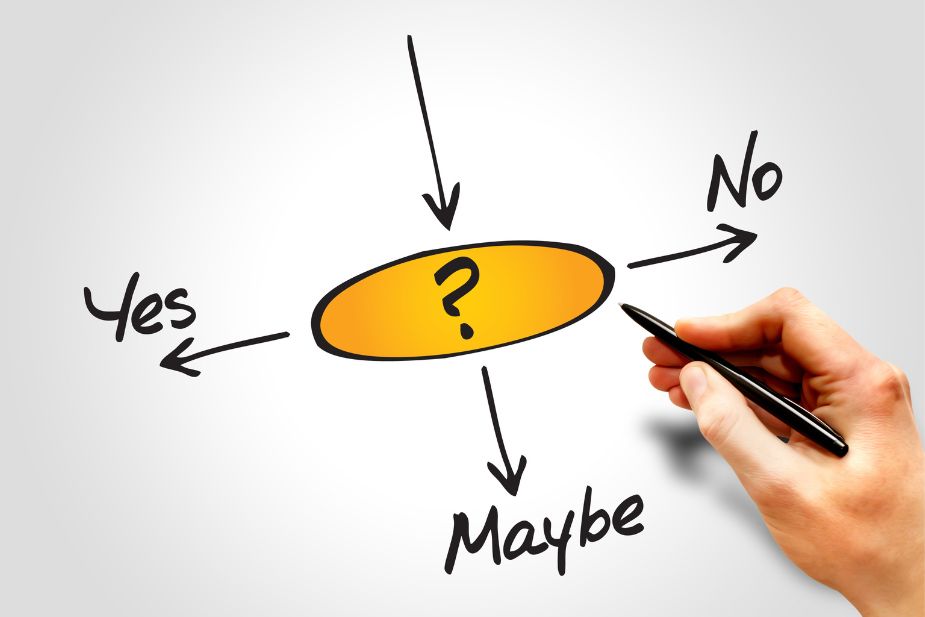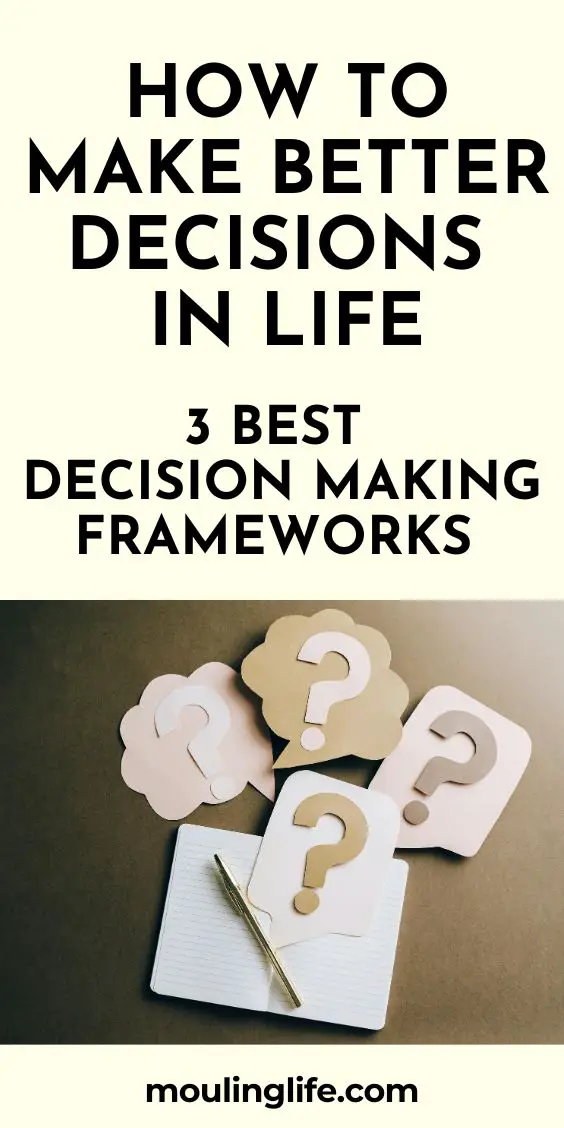
Every decision making feels like an eternal struggle. You just cannot choose.
Whether it is deciding between drinking tea or coffee or choosing between college degrees, indecisiveness casts its long, nasty shadow over every choice.
It doesn’t matter if the stakes are high or low, indecisiveness slows you down and adds to your mental load.
Too many choices and too little clarity make your agony worse.
There are many things that are draining your energy – it’s time to take out indecisiveness from that list.
Here are three proven frameworks to help you make better decisions – without breaking your head.
1. The 3 Question Filter
Ask yourself these three questions before taking decisions:
a. Does this align with my values?
Is the decision you are making reflective of your core values? Does this decision honor your beliefs?
Values are the foundation for a well-lived life. These can be used as filters to decide if you are taking the right decision.
Example:
You have to decide whether or not to go to a party with people who are not your close friends. It’s difficult to make a decision because you are worried whether they will think you are rude.
Now, here’s the filter at work:
- If ‘depth’ is your value, skip the party. Small talk drains your energy and you aren’t even close with them.
- But if ‘fun’ or ‘exploration’ is your value, then say yes. You might end up surprising yourself.
➡️ Related Post: How to Discover Your Personal Values and Principles
b. Will this matter in a year?
Everything seems urgent and important always. This is why you are spending considerable time thinking and overthinking before making a decision.
Not all decisions require so much effort.
This question helps filter out all the noise and helps you focus on the real, long-term things.
Does this decision impact my life or goals in the long run?
If it doesn’t, then maybe the decision-making process doesn’t deserve so much mental energy.
Example:
A weekend trip with friends or save that money for the future? Unable to decide between fun and financial stability?
Zoom out.
If you are in a financially stable phase and can afford the trip, go ahead and have a great time with friends.
But if you are struggling, and you need to save the money for the future, then postpone going on the trip.
Taking a few steps back helps you choose the right decision instead of deciding whatever makes you feel good.
c. What’s the next small step I can take today?
What is one tiny, low-pressure action that will help me move forward with clarity?
People overthink the decision because they want clarity.
Don’t wait for certainty—just begin. Clarity often comes after action.
2. The 10-10-10 Rule
When you can’t decide what is the right thing, pause and ask yourself this:
a. How will you feel about this decision in 10 minutes?
Will you feel regret, guilt, excitement, or joy within a few minutes of taking the decision?
Sometimes, thinking about how you will feel in a short span of time helps in the decision-making process.
b. How will you feel about this decision in 10 months?
Will I be proud of this choice? Or will it have slowed me down?
10 months is not too far in the future but not too close either.
The real consequences of the decisions you took start to show up.
So, this is a good time frame to think about.
c. How will you feel about this in 10 years?
Will this decision shape my identity, relationships, or life path? Or will I not even remember it?
This question helps you connect with your long-term vision. Especially helpful in taking life-changing decisions.
Example:
You’re tempted to say “yes” to a freelance project, even though your plate is full and your gut says no.
- In 10 minutes, saying yes might feel like relief—yay, they won’t think I’m flaky!
- In 10 months, you might feel resentment, burnout, or regret.
- In 10 years, you probably won’t even remember the project—but you will remember the version of you who kept saying yes to things at the cost of your peace.
So, the right decision is to say no to the project. This simple framework can help you take this decision faster.
3. Trial Period for Testing Decisions
Many dread decision making because they are obsessed with making it perfect.
Too much time is spent on research, thinking, and analysis, all because of the fear of the decision going wrong.
Many life-changing decisions require a lot of time and effort. But not all decisions fall under this category. Not all decisions are permanent.
Take a decision and test it out to know whether it’s helping you or not.
Decide a period of time during which you will test your decision. Review the results and then decide whether it’s the right one or not.
Example:
This trial phase removes the fear of forever. This will help you take decisions much faster and more efficiently.
Bonus: Mini Frameworks to Make Decisions Easier
If you are someone who struggles to make even small decisions like what to eat for lunch or what to wear for work, here are simple frameworks to help you:
1. Meal roulette: Have a short list of 5 simple breakfast, lunch, and dinner options. On days you are struggling to decide, pick one from these.
2. The ‘Meh Test’: Ask yourself will this feel ‘meh’ or ok an hour later? If both feel the same, pick one.
3. Limit choices: Too many choices make decision-making a struggle. So, limit your choices for food, outfits, subscriptions, etc.
4. Create routine: Automate the basics—food, outfits, workouts—so that you don’t break your head making everyday decisions.
Conclusion
You will never feel fully ready to take a decision. That’s the truth. It’s a fact.
So, be courageous by taking the first step. Test the decision and make changes accordingly.
Decision-making doesn’t have to be stressful. It shouldn’t be something where you spend a lot of time and energy.
I hope these frameworks will help you to make better decisions in life.
You Might Also Like:
➡️How to Discover Your Personal Values and Principles
➡️How to Create a Clear, Honest Life Vision in 4 Simple Steps
➡️How to Finally Stay Consistent (Even If You’ve Failed 100 Times Before)
➡️5 Simple Rules to Help You Begin Your Self Development Journey





Leave a Reply